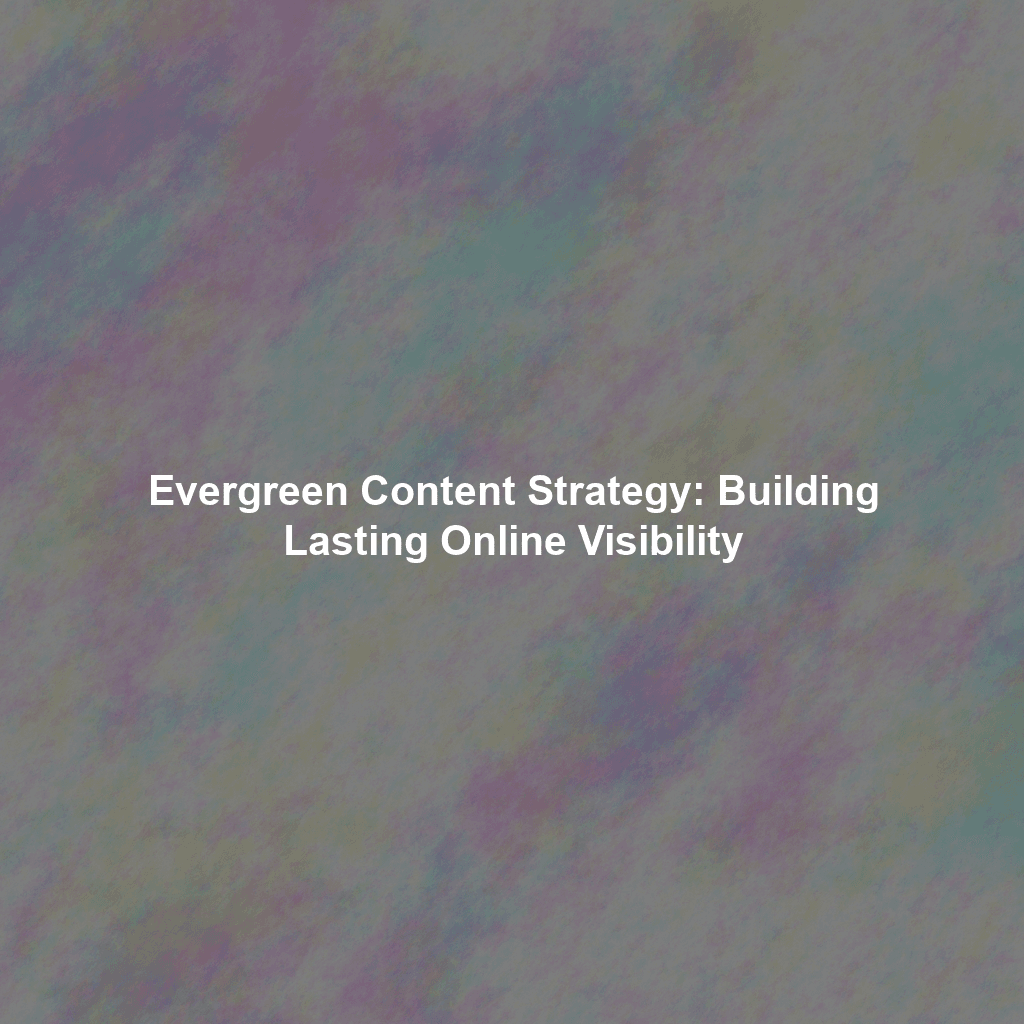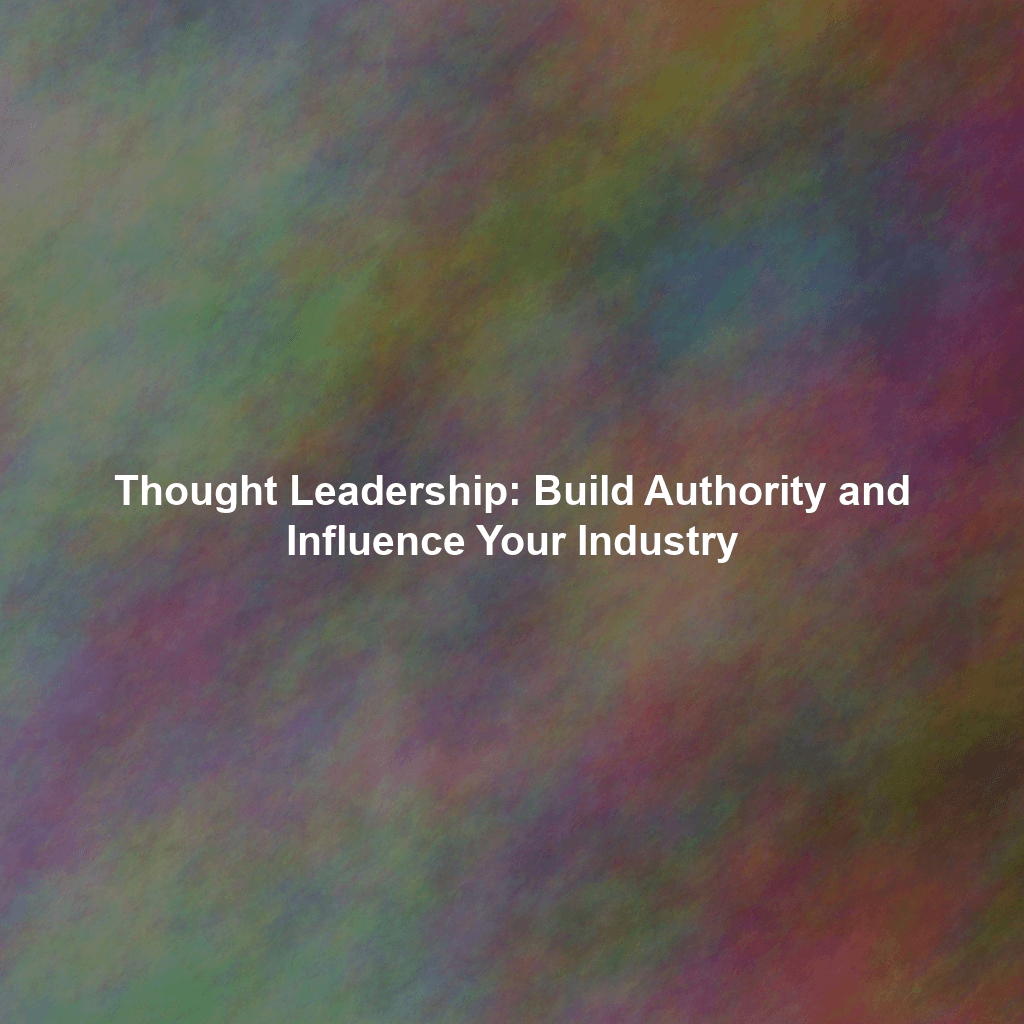Defining Evergreen Content: The Enduring Asset
Evergreen content distinguishes itself by maintaining relevance and value to its target audience over a substantial duration. Its utility is not contingent on current events, seasonal fluctuations, or transient popular culture. Instead, it systematically addresses timeless topics and provides foundational, enduring information that individuals will persistently seek and find beneficial, regardless of when they encounter it. This inherent stability ensures consistent value delivery and plays a critical role in cultivating long-term brand credibility, a core objective of effective inorganic marketing.
Consider the practical distinction: a blog post titled “The 10 Best Holiday Gifts for 2024” possesses an inherent obsolescence, becoming irrelevant by January 1st, 2025. Conversely, a comprehensively structured guide such as “How to Select the Optimal Gift for Any Recipient” retains its potential to attract and engage readers for multiple years. The differential factor lies not in the immediate appeal, but in the inherent, enduring quality and broad applicability of the information conveyed.
Core Characteristics of Evergreen Content:
- Timeless Relevance: Critically, evergreen content is not dependent on current events, fleeting fads, or seasonal cycles. Its informational value persists independently of external temporal factors.
- Sustained Utility: The information provided maintains its usefulness and applicability over an extended period, addressing perennial questions or persistent informational needs.
- Strategic Keyword Optimization: Effective evergreen content targets keywords that demonstrate consistent, non-seasonal search volume, ensuring a steady stream of organic inquiries.
- Verifiable Accuracy: The factual basis of the content must be accurate and, crucially, subject to periodic review and necessary updates to preserve its informational integrity.
- Unambiguous Clarity: Content is structured and written to be easily comprehensible and digestible, minimizing cognitive load for the reader. Complex concepts are elucidated with precision.
- Established Authority: Through its depth and accuracy, evergreen content actively positions the creator as an authoritative expert within their specific domain, fostering trust and recognition.
Quantifying the Benefits of an Evergreen Content Strategy: Long-Term ROI
Strategic allocation of resources towards evergreen content is, fundamentally, an investment in the long-term health and operational efficiency of your digital presence. It represents a critical component of any successful inorganic marketing framework due to its capacity to generate compounding returns over time. The benefits extend beyond immediate engagement, impacting core metrics such as search engine ranking, lead generation efficiency, and overall brand equity.
Tangible Advantages:
- Sustainable Organic Traffic Acquisition: Evergreen content consistently attracts organic traffic from search engines and social media channels over an extended duration. This significantly reduces reliance on short-term, often costly, marketing tactics, improving the overall efficiency of traffic acquisition.
- Enhanced Search Engine Optimization (SEO) Performance: By precisely targeting relevant, high-volume keywords and consistently delivering authoritative, valuable information, evergreen content measurably improves a website’s search engine ranking. This increased visibility translates directly into higher organic click-through rates. Google’s algorithms, particularly those related to E-E-A-T (Experience, Expertise, Authoritativeness, and Trustworthiness), increasingly favor content that demonstrates depth, accuracy, and sustained relevance. For example, a study by Moz emphasizes how evergreen content forms the backbone of a robust SEO strategy.
- Efficient Lead Generation: Evergreen content serves as a powerful magnet for attracting and nurturing qualified leads. By offering perpetually valuable resources, comprehensive insights, and actionable guidance directly pertinent to your products or services, it facilitates a natural progression from informational inquiry to genuine interest.
- Fortified Brand Authority and Trust: The consistent creation and dissemination of high-quality evergreen content systematically positions your organization as a recognized expert in your field. This continuous demonstration of expertise cultivates trust and deepens credibility with your target audience, fostering long-term loyalty.
- Optimized Content Creation Costs: While the initial investment in producing high-quality evergreen content requires significant upfront effort, its enduring value generates returns for an extended period. This dramatically diminishes the continuous demand for new content generation, thereby reducing overall marketing expenditures and improving cost-efficiency.
- Amplified Social Amplification: Content that maintains high quality and perpetual relevance is inherently more likely to be shared across social media platforms. This organic amplification expands your reach exponentially, driving additional qualified traffic back to your website without incremental promotional spend. Data from Sprout Social consistently shows that utility-driven content performs strongly in terms of shares and saves.
Constructing Your Evergreen Content Strategy: An Operational Blueprint
Developing a successful evergreen content strategy necessitates meticulous planning and precise execution. It is not a passive undertaking but an active, iterative process designed for sustained impact. This structured approach provides a clear framework for initiation and continuous improvement.
1. Keyword Research: Identifying Enduring Search Demand
The bedrock of any effective content strategy, particularly one centered on evergreen principles, is exhaustive keyword research. The objective is to identify keywords that exhibit consistent, non-seasonal search volume and align directly with your audience’s persistent informational needs. Focus on terms that are:
- Audience-Centric: What fundamental questions do your potential customers consistently ask? What persistent challenges do they seek to resolve? Prioritize their informational intent.
- Inherently Evergreen: Do these keywords exhibit stable search volume over time, unaffected by transient trends or current events? Avoid terms that are heavily influenced by ephemeral popularity.
- Strategically Achievable: Given your website’s current domain authority and the competitive landscape for specific keywords, can you realistically achieve a prominent search ranking? A robust understanding of competitive density is crucial here.
Leverage advanced keyword research tools such as Google Keyword Planner, Ahrefs, or SEMrush. These platforms provide invaluable data on search volume, competitive analysis, and related keyword suggestions, enabling data-driven decisions. For instance, analyzing historical search trends through Google Trends (trends.google.com) can confirm the enduring nature of specific queries.
2. Topic Selection: Choosing Subjects with Perpetual Resonance
Once a refined list of relevant keywords is established, the next critical step is to brainstorm and select topics that precisely align with your audience’s enduring interests and your core business objectives. Focus on evergreen topic categories that offer inherent longevity:
- “How-To” Guides and Tutorials: These evergreen staples teach your audience how to systematically accomplish specific tasks or overcome common obstacles. Examples include “How to Optimize Your LinkedIn Profile for Career Growth” or “How to Efficiently Manage Personal Finances.”
- “What Is” Explanations: Comprehensive explanations of foundational concepts provide immense value. Examples: “What is Quantum Computing and Its Practical Applications?” or “What is a Smart Contract in Blockchain Technology?” These types of articles serve as authoritative reference points.
- Curated List Posts (e.g., “Top X”): These are effective when they present a carefully selected compilation of resources, tools, or expert tips that retain their utility. Examples: “10 Indispensable Productivity Tools for Remote Teams” or “5 Core Principles of Effective Leadership.” Ensure the lists are genuinely useful and not just arbitrary numbers.
- In-Depth Case Studies: Real-world examples demonstrating how your products or services have tangibly helped customers achieve measurable outcomes provide powerful social proof and illustrate practical application. A well-constructed case study on “How a SaaS Company Increased Customer Retention by 15% Using AI-Driven Analytics” can be evergreen if the underlying principles are broadly applicable.
- Practical Checklists and Templates: Downloadable resources offering immediate, practical value, such as “A Comprehensive SEO Audit Checklist” or “Template for Developing a Strategic Marketing Plan.” These provide actionable utility.
- Comprehensive Glossaries and Dictionaries: For industries with specialized terminology, a well-maintained glossary provides an invaluable resource, defining industry-specific terms with clarity. For instance, a “Glossary of Cybersecurity Terms” remains a vital reference.
- Definitive “Ultimate Guides”: These are exceptionally detailed resources that provide a holistic, in-depth exploration of a broad topic, aiming to be the definitive resource on that subject. An “Ultimate Guide to Digital Transformation for Small Businesses” can encompass numerous sub-topics and remain relevant for years with periodic updates.
3. Content Creation: Delivering Expert-Level Value
The creation phase demands meticulous attention to detail, ensuring the content is not only informative but also engaging and authoritative. This is where the principles of E-E-A-T become paramount. My experience, particularly as a former CEO and CFO, reinforces the need for analytical rigor and a clear focus on actionable insights and ROI in any communication. Therefore, the content will:
- Provide Actionable, Unique Insights: The objective is not merely to reiterate existing information. The content must offer fresh perspectives, unique insights, and practical, implementable advice. It should address the “why” behind concepts and decisions, not just the “what.”
- Employ a Clear, Concise, and Engaging Style: The writing must be easily digestible and enjoyable to read. Avoid jargon where simpler terms suffice, but do not shy away from precise business or technical vocabulary when necessary, ensuring it is always accompanied by clear explanations. Nick Jain’s preference for direct and assertive tone, coupled with conciseness, will be applied.
- Strategic Visual Integration: Incorporate high-quality images, pertinent videos, informative infographics, and other visual assets. These elements break up dense text, enhance comprehension, and significantly improve reader engagement. Visuals should not be decorative but functional.
- Rigorous SEO Optimization: Integrate relevant keywords naturally within the title, headings, and body text. Optimize all images with descriptive alt text. Ensure internal and external linking strategies are implemented to enhance discoverability and demonstrate topical authority.
- Proactive Promotion: While evergreen content naturally attracts traffic, initial promotion accelerates its reach. Share the content strategically across social media, through email newsletters, and via other pertinent channels to broaden initial audience exposure.
4. Optimization and Updates: Sustaining Perpetual Freshness
The label “evergreen” does not imply “static.” To maintain its intrinsic value and search engine prominence, evergreen content requires a proactive strategy of regular review, update, and optimization. This is a critical operational aspect for long-term ROI.
- Systematic Content Review: Establish a recurring schedule to audit existing evergreen content. Identify outdated statistics, broken links, and areas where information could be expanded or clarified, and opportunities for enhanced readability. This proactive maintenance ensures ongoing accuracy and relevance.
- Incorporation of New Information: The digital landscape evolves, albeit incrementally for evergreen topics. Integrate new data points, emerging examples, updated methodologies, and fresh perspectives to keep the content current and demonstrably authoritative. For instance, if a technological process is described, new efficiency improvements or security protocols should be added.
- Re-optimization for Evolving SEO: Search engine algorithms are dynamic. Periodically re-evaluate your content’s SEO effectiveness. This may involve identifying newly relevant long-tail keywords, optimizing for voice search queries, or adapting to changes in how Google assesses content quality and user experience.
- Re-Promotion of Updated Content: When significant updates are made, treat it as a newsworthy event. Announce the refreshed content to your audience via social media, email, and other distribution channels. This signals to both users and search engines that the content remains a valuable and current resource.
5. Promotion and Distribution: Maximizing Reach and Impact
Creating exceptional evergreen content is only a partial victory. To realize its full potential, active promotion and strategic distribution are indispensable. This phase ensures the content reaches and resonates with its intended audience, maximizing its ROI.
- Leverage Social Media: Share your content across platforms most relevant to your target audience. Engage actively in comments and discussions, positioning the content as a valuable resource within relevant communities. While a TikTok dance fades, a comprehensive guide shared on LinkedIn or X (formerly Twitter) can continue to drive professional engagement.
- Strategic Email Marketing: Integrate links to your evergreen content within your email newsletters, automated welcome sequences, and lead nurturing campaigns. This ensures that new and existing subscribers consistently encounter your foundational resources.
- Guest Blogging and External Contributions: Seek opportunities to publish guest posts on reputable industry websites. These contributions can strategically link back to your evergreen content, driving qualified referral traffic and enhancing your domain authority.
- Robust Internal Linking Structure: Implement a logical and comprehensive internal linking strategy. Link to your evergreen content from other relevant pages throughout your website. This improves site navigation, distributes link equity, and reinforces topical clusters for search engines.
- Consider Targeted Paid Advertising: For particularly high-value evergreen assets, consider a strategic, limited paid advertising campaign. Platforms like Google Ads or LinkedIn Ads can effectively promote content to a highly targeted audience, significantly accelerating its reach and impact. The key is targeted expenditure for optimal ROI.
Illustrative Examples of Effective Evergreen Content
To provide a concrete understanding of evergreen content in practice, consider these examples that consistently deliver value:
- “A Comprehensive Guide to Effective Time Management for Professionals”: This topic addresses a universal challenge faced by nearly everyone in the workforce. A guide offering practical, actionable techniques, backed by research or established productivity methodologies, will perpetually attract readers seeking to optimize their workflow and output.
- “The Ultimate Checklist for Launching a Successful Startup”: This resource provides a systematic, step-by-step guide for new entrepreneurs. Covering essential considerations from market validation and legal structure to initial funding and team building, it remains an invaluable resource for anyone embarking on a new venture. Resources from the U.S. Small Business Administration (SBA) often embody similar evergreen principles.
- “What is Content Marketing and Its Foundational Importance for Modern Businesses?”: This article dissects the core concepts of content marketing and elucidates its fundamental benefits for organizations. As long as businesses operate online, this explanation remains critically relevant.
- “Case Study: How [Your Company Name] Optimized Customer Acquisition by X% Through [Specific Strategy]”: A well-documented case study showcasing the measurable impact of a specific business strategy (e.g., AI integration, supply chain optimization) provides powerful, evergreen evidence of effectiveness. The principles illustrated in such a case study, if clearly articulated, can transcend the specific client or project.
- “A Definitive Glossary of Artificial Intelligence and Machine Learning Terminology”: For rapidly evolving technical fields, a regularly updated, comprehensive glossary provides an essential reference point for both novices and experienced professionals, clarifying complex jargon. For instance, academic sources like Wikipedia’s entry on Artificial Intelligence demonstrate the scope of such a resource.
Common Pitfalls to Avoid in Evergreen Content Implementation
While the conceptual framework of evergreen content is straightforward, its effective implementation requires avoiding common errors that can undermine its long-term impact and ROI. Awareness of these pitfalls is crucial for strategic deployment:
- Neglecting Periodic Updates: The most significant misconception is believing “evergreen” means “never touch again.” Content, regardless of its initial timelessness, requires regular review and necessary updates to ensure accuracy, factual currency, and continued relevance. Outdated statistics, broken links, or superseded methodologies erode trust and authority.
- Excessive Keyword Stuffing: Over-optimizing content by unnaturally inserting keywords degrades readability and can trigger negative algorithmic penalties from search engines. The focus must always be on delivering authentic value through natural language, with keyword integration serving to enhance discoverability, not compromise user experience.
- Passive Content Creation Without Promotion: The adage “build it and they will come” rarely applies in the digital marketing landscape. Even the highest quality evergreen content necessitates active promotion and strategic distribution to reach its target audience. Without a robust amplification strategy, its potential impact remains unrealized.
- Ignoring Mobile Responsiveness: A significant portion of digital consumption occurs on mobile devices. Failing to ensure that evergreen content is seamlessly accessible and optimally readable across all device types, particularly smartphones and tablets, alienates a substantial segment of the audience and negatively impacts user experience metrics.
- Pursuing Overly Broad or Undefined Topics: While aiming for timelessness is a core principle, selecting topics that are excessively broad can dilute the content’s focus and diminish its effectiveness. Strategic niche-down where appropriate. For example, “The History of Computers” is too vast; “The Evolution of Neural Networks in AI” is more focused and actionable.
The Evolving Nature of Evergreen Content: Adaptability as a Strategic Imperative
While the fundamental principles underpinning evergreen content remain constant, the broader digital ecosystem is in a state of continuous evolution. To maintain a competitive edge and ensure sustained effectiveness, a strategic approach requires adaptability and a willingness to explore innovative formats and distribution methodologies. Proactive engagement with emerging trends ensures your evergreen assets retain their cutting-edge relevance.
- Emphasis on Video Content: Video continues its ascent as a dominant content format. Creating evergreen video content – such as explanatory animations, detailed tutorials, or expert Q&A sessions – offers a powerful avenue for engaging audiences and catering to diverse consumption preferences. Platforms like YouTube act as vast evergreen content repositories.
- Interactive Content Integration: Incorporating interactive elements like quizzes, polls, calculators, or configurators can significantly enhance content engagement and utility. These elements transform passive consumption into active participation, increasing time on page and information retention. For instance, a “ROI Calculator for Marketing Software” is an evergreen, interactive tool.
- Strategic Personalization: As data analytics and AI capabilities advance, tailoring content to the individual needs and interests of specific audience segments becomes increasingly feasible. While a generic “Ultimate Guide” serves a broad audience, personalized recommendations or adaptive content paths can dramatically improve relevance and effectiveness for specific users.
Conclusion: Building a Sustainable Digital Legacy with Evergreen Content
An evergreen content strategy transcends the confines of a mere tactical marketing approach; it represents a profound, long-term investment in your organization’s enduring online presence and intellectual capital. By systematically creating high-quality, timeless content that delivers sustained, measurable value to your audience, you cultivate a robust and predictable stream of organic traffic. This strategic asset not only enhances your search engine rankings and overall digital visibility but critically establishes your organization as an authoritative and trustworthy entity within its domain. Embracing the inherent power of evergreen content is not merely an option but a strategic imperative, laying the foundation for a sustainable digital legacy within your comprehensive inorganic marketing framework. This commitment to enduring value, rather than chasing ephemeral trends, delivers clear, long-term ROI and establishes a definitive competitive advantage.
#EvergreenContent #ContentMarketing #SEOStrategy #InorganicMarketing #DigitalStrategy #BrandAuthority #LongTermROI
 Skip to content
Skip to content

